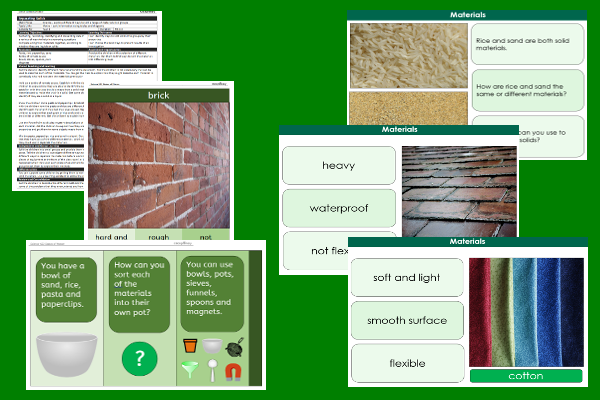Lesson Three – Separating Solids

This science teaching pack for Key Stage Two gets the children to explore, describe and test different ways of sorting a selection of solid materials into matching groups using a range of techniques.
The class can suggest and model how they can separate a pair of mixed solid materials using a range of scientific equipment including sieves, funnels and magnets.
Download this teaching pack including a lesson plan, classroom activities and an interactive presentation to teach the children to explore, describe and test different ways of sorting a selection of solid materials into matching groups using a range of techniques
Activities in this teaching pack include display posters to identify and describe different solid materials by their matching properties and a table display card to support a scientific investigation into how to separate a range of solid materials into matching groups.
The interactive presentation gets the children to explain how they can identify a solid material from its matching properties and some of the techniques that they could use to separate a pair of mixed solid materials.
This lesson is part of a science scheme of work to get the children to explore, test and explain how a range of different materials can change their states between solids, liquids and gases by conducting a series of fair tests. There are teaching activities for shared learning, differentiated worksheets to support independent learning and interactive presentations to introduce concepts and key skills.
-

English SPAG Assessment
Assess abilities in composing sentences for fiction and non-fiction using the correct spellings, punctuation marks and grammar vocabulary phrases
-

Maths Arithmetic Assessment
Assess abilities in solving arithmetic number problems for addition, subtraction, multiplication and division when working with informal and formal written calculations
-

Environment
Identify and describe some of the special landscapes and locations that can be found in the world and reflect on how they can be protected and preserved for the future
-

Silent Letter Words
Explore and illustrate the meanings and spellings of some different words with silent letters when using them in a range of topics and scenarios
